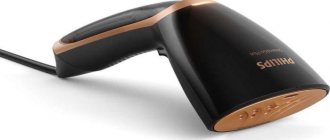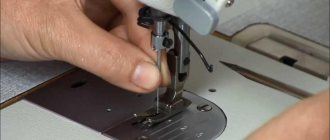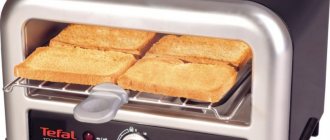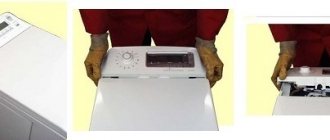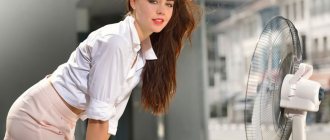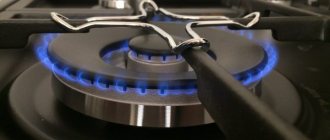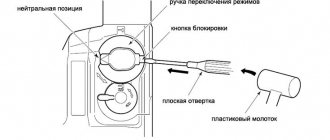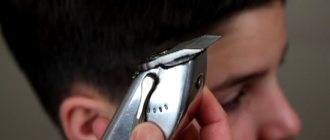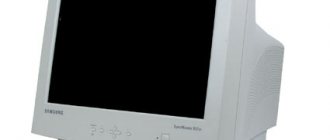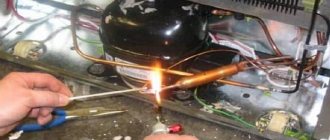Why the hair dryer does not work - possible reasons
Table of contents:
- How exactly does a hair dryer not work - and what does this mean?
- Hairdryer won't turn on? Check the outlet and cord
- Is the propeller spinning poorly? Cleaning it
- Or maybe the hair dryer isn't working because the motor is burned out?
Reading time: 3 minutes.
Is your hairdryer broken and not working? Don't rush to grieve. Yes, it is possible that the hair dryer has completely failed, so that now all that remains is to throw it away and buy a new one, perhaps of better quality. But it is also quite possible that the malfunctions are reversible, and that it will only be enough to correctly understand the cause of the malfunctions and take simple corrective actions - and the hair dryer will work as before.
Wiring diagram of a hair dryer
This electrical appliance - a hair dryer - is very popular and often indispensable in everyday life.
Due to high consumer demand, the designs of most hair dryers have become very similar, and the quality of workmanship and price have dropped. Today, buying a truly durable hair dryer is very difficult. The practice of repairing hair dryers of various brands suggests that the breakdowns that occur are of the same type and, as a rule, are not fatal, but can be easily repaired without serious expenditure of money. Any electric hair dryer in its design contains two main, large elements: a fan and a heater. The fan drives air through the heater (heating element), drawing it in behind the hair dryer and expelling it hot from the front.
Hair dryer device. 1 - propeller; 2 - electric motor; 3 - heater; 4 — thermal protection; 5 — mode switch; 6 - power cable.
In household hair dryers, the fan is built on the basis of low-voltage (12-18 V) DC commutator motors. Such a motor cannot be powered directly from a 220 V AC network. To achieve the required voltage drop, a separate coil (let's call it a step-down coil) is used inside the heating element. To rectify the voltage, a full-wave rectifier (diode bridge) is used, mounted on the contacts of the electric motor. A plastic propeller consisting of three or more blades is mounted on the metal shaft of the engine.
The heating element of the hair dryer is a frame made of fireproof material with several windings of nichrome wire (spiral). Depending on the number of operating modes of the hair dryer, there may be two or three windings, one of which is step-down.
Heating element with two windings.
The hot coils of the heating element must be constantly blown with cold air, especially when operating at maximum power. If for any reason the air supply becomes insufficient or stops altogether (for example, the engine fails), then, for reasons of fire safety and to avoid burnout of the heating element, the hair dryer should automatically turn off. This emergency shutdown occurs due to the presence in the hair dryer of two heat-sensitive elements at once - two “lines of protection” inside the heater.
The first “frontier” is the thermostat. It consists of a pair of closed contacts mounted on a bimetallic plate. Being close to the outlet of heated air, the contacts are intensively blown by it. When the exhaust air reaches a critical temperature, the contacts move away from each other, and the power supply circuit of the hair dryer opens. After a few minutes, when the bimetallic plate has cooled, the contacts will close again and the hair dryer will turn on.
Thermostats based on bimetallic plates.
If the above protection for some reason does not work at the right time, then a few seconds later the “second line” of protection is activated - the thermal fuse. This fuse is disposable and, after tripping, needs to be replaced.
Thermal fuse.
Rowenta CV 4030 hair dryer device.
To see the internal structure of a household hair dryer, let's look at its typical representative - Rowenta CV 4030. This model is equipped with a fan based on a low-voltage motor, the heating element consists of one reduction coil and two heating coils. The hair dryer has three operating modes; in the first mode the fan speed is lower than in the other two. The schematic diagram of this hair dryer is presented below.
In the first position of switch SW1, the mains power passed through the XP1 plug, filter C1R1, protective elements F1, F2, diode VD5 (necessary to cut off one half-wave of alternating voltage) is supplied to the step-down coil H1, through which the electric motor M1 is powered. Diodes VD1-VD4 are necessary to rectify the alternating voltage reduced by the H1 spiral. Inductors L1, L2 and capacitors C2, C3 serve to reduce interference that occurs during operation of the brush motor. Through the VD5 diode, power is also supplied to the heating coil H2.
When switch SW2 is moved to position “2”, diode VD5 is short-circuited and “goes out of play”. The engine starts to operate at maximum speed, the H2 spiral heats up more. The third position of the switch SW2 corresponds to the maximum power consumption mode, when the H3 spiral is connected in parallel with the H2 spiral. In this position, the temperature of the exhaust air is highest. The “cool” button is included in the gap of both heating spirals; when pressed, only the electric motor through the H1 spiral remains turned on, the H2 and H3 spirals are de-energized.
The process of opening the Rowenta cv4030 hair dryer. Hairdryer in semi-assembled form.
Hairdryer without housing. From bottom to top: switch SW1, capacitor C1 with resistor R1 soldered to it, button SB1, heating element, motor with propeller (in a black casing). A heating element. The VD5 diode (photo on the left) and inductance coils (photo on the right of one coil) of the Rowenta CV 4030 hair dryer are mounted inside the heating element. Thermostat (photo on the left). Thermal fuse (photo on the right)
How exactly does a hair dryer not work - and what does this mean?
When a person says that the hair dryer is broken, this usually means one of the following incidents:
- The hair dryer simply does not turn on and does not react in any way to your actions.
- The hair dryer propeller spins very poorly or does not spin at all, there is not enough air pressure.
- The hair dryer sparks, when you turn it on, you smell a burning smell, you want to quickly turn it off - yes, that’s right, be sure to turn off the hair dryer when something like this starts.
Naturally, all these problems have different causes. Now we will figure out how to diagnose and possibly fix them.
HAIRDRYER REPAIR
Recently, a hair dryer was brought to me for repair, not one of the most old-fashioned, but times are different now, who repairs a hair dryer for $10, and sometimes it’s easier to buy a new one, taking into account that the entire market is literally filled with cheap Chinese hair dryers. So, let’s take this opportunity to look at the design and operation of hair dryers.
Operation of a household hair dryer
The hairdryer operates on 220 V, 50 Hz. Any hair dryer has two main parts - a heating element and an electric motor.
A nichrome spiral is usually used as a heating element; it provides warm air. Hair dryers mainly use DC electric motors with a power of up to 50 watts, there are exceptions.
Passing through the spiral, the current loses its initial strength, since the spiral has a certain resistance; it is this current that is rectified by the diode bridge and supplied to the electric motor.
Electric motors in hair dryers are designed for voltages of 12, 24 and 36 Volts; only very rare models use electric motors with a power supply of 220 Volts, in which case the voltage from the network is directly supplied to the electric motor. A propeller (propeller) is attached to the engine rotor, which removes heat from the spiral; it is thanks to this that a fairly strong directed flow of warm air is obtained at the output. The power of the hair dryer depends on the thickness of the coil used and the power of the installed electric motor.
The hair dryer that was brought was disassembled, it turned out that the problem was a broken track on the circuit board with the switches. After filling it with solder, the device worked fine.
But most often, the main reasons for malfunction are a broken spiral, a non-working motor, switch contacts melted from heat, a broken power cord or plug.
What does the hairdryer consist of:
Elements in the diagram: 1 — diffuser nozzle, 2 — body, 3 — air duct, 4 — handle, 5 — cord anti-twist guard, 6 — “Cold air” mode button, 7 — air flow temperature switch, 8 — flow speed switch air, 9 — “Turbo” mode button — maximum air flow, 10 — loop for hanging the hair dryer.
Wiring diagram of a simple hair dryer
The electric motor is supplied with DC voltage obtained through a diode bridge consisting of four diodes (or simply from one diode).
Let's highlight two elements of the circuit that are consumers (loads), these are the spiral and the diode bridge (we do not count the motor, because it is the load of the bridge). In the circuit, the elements are arranged in series (one after the other), which means that the voltage drop across each of them will depend on its own resistance and their sum will be equal to the network voltage in the third position of the switch.
Most entry-level hair dryers have a simple electrical circuit; such hair dryers have only one switch that turns on the fan and heating element. Heaters can be made in various modifications, but in all hair dryers they are made of nichrome twisted into a spring.
However, almost all simple modern hair dryers have 2-3 stages of power and air flow adjustment.
More advanced hair dryers have smooth controls for blowing speed and temperature of the blown air.
Rules for using hair dryers
The recommended maximum operating time is 5 minutes. Upon completion of work, turn the temperature regulator to minimum, leave it on cold air for half a minute, and only then turn off the hair dryer. Try not to handle it with wet hands, otherwise moisture may get on the internal elements of the circuit, which can lead to a short circuit. Author: AKA KASYAN.
Originally posted 2019-08-28 02:10:47. Republished by Blog Post Promoter
Hairdryer won't turn on? Check the outlet and cord
Yes, yes - for many this assumption will only cause a sarcastic grin, because, of course, they have already checked. But human logic really is such that we can often sin for the wrong reasons. If your hair dryer is not working, first test it in other outlets and check other appliances in those outlets. It is quite possible that it was not the hair dryer that broke.
Are the sockets working? Checking the cord.
Ideally, if possible, it is better to use a multimeter or an indicator screwdriver to check the integrity of the cord and the passage of electricity through it.
Although damage to the cord can also appear externally - as abrasions, tears or cuts in the cord. Pay special attention to the beginning and end of the cord - the area near the plug and the area near the entrance to the housing. Most of the problems with cords occur in these places.
If the cord is intact, well, let’s move on and disassemble the hair dryer. By the way, when you have disassembled it, first pay attention to the internal path of the power cord - a violation of the integrity of the wire may already be inside the hair dryer.
If you can find a problem with the cord, great, it can be fairly easy to fix if you have basic wiring skills. If not, don’t risk it, give it to someone who knows how.
Design and principle of operation of a hair dryer
The hair dryer first began to be actively used back in the 40s. Today the device can safely celebrate its 75th anniversary. It is in every home, because it is difficult for a girl to imagine a beautiful hairstyle without using it. The design and operating principle of the hair dryer is simple. After a detailed analysis, it will be possible to choose a suitable device that is guaranteed to last for a long period of time. The likelihood of breakdowns in modern devices has been reduced to a minimum. Every person should also have the appropriate knowledge of operating rules.
Or maybe the hair dryer isn't working because the motor is burned out?
This problem is a problem for all problems. The fact that this is the problem, by the way, is indicated by the smell of burning or sparks from a hair dryer. However, these symptoms may not exist, but if everything else is in order, well, it’s quite likely.
The difficulty here is that you most likely will not be able to repair the engine at home. Well, unless you are Lefty, capable of shoeing a mechanical flea. The hairdryer will have to be taken to a service center, where the motor will most likely simply be replaced. If at all there is a service that works with hair dryers of your brand.
That is why we at Mustang Professional repeat that the service life of a hair dryer largely depends on the service life of the motor. And when you choose a hair dryer that should serve you honestly and for a long time, you should pay attention to what kind of motor is installed in it.
We install motors in our hair dryers from the American brand Johnson Motors, known for their amazingly long service life. That's why we're confident in our hair dryers - and that's why our customers are confident in them.
If the quality of your current hair dryer does not suit you, take a look at our catalog. It is likely that you will find a replacement for it that will delight you for many years.
Possible problems and their solutions
- The device does not turn on.
This usually occurs due to damage to the power cord. Carefully inspect the wire for kinks, and also pay attention to the places where the wire is attached to the plug and to the housing - this is where the cord frays most often. If this happens, then the only way out is to completely replace the power cord or disassemble the plug itself if the cable is frayed near it. Another possible reason is a faulty outlet or lack of electricity. Try connecting another appliance to the outlet to see if it works. If everything is fine with it, you need to look for the problem in the hair dryer itself.
- When turned on, a burning smell appears.
Most often, this problem occurs when the motor becomes clogged with hair, dust or other foreign elements. The mesh fan grille is designed to protect the motor from hair, but it does not always cope with this task. As a result, they clog the engine and begin to burn, which causes an unpleasant odor. To get rid of this problem, you need to pull out the hair stuck inside the housing. It is convenient to do this using a sharp thin object - for example, a knitting needle, a thin screwdriver or long tweezers. If after cleaning the burning smell does not disappear, be sure to contact a workshop - the problem may be in the engine or heating system.
- The device turns off during operation.
Most often this happens due to exceeding the permissible temperature. A hair dryer can overheat for the same reason - hair or dust clogs the motor and prevents cold air from passing through the heating element, which causes it to stop cooling and the device to overheat. Most hair dryers have special fuses that automatically turn off the device as soon as it gets too hot. This happens to prevent the motor from burning out due to overheating. The way out of this situation is similar - you need to remove the grill or disassemble the device, clean it of foreign objects and dirt and let it cool completely.
- Any mode does not work or one of the switches does not respond to pressing.
This situation may arise due to a breakdown of the switches themselves - for example, if their contacts are damaged or come loose. This can be checked while disassembling the hair dryer. In most cases, loose contacts can be easily soldered back, and broken ones can be replaced with new ones.
- The hairdryer only blows cold air.
This can happen due to a broken heating element, a broken or damaged coil, or a problem with the microcircuit. You can try to heal a torn or damaged spiral yourself, but the result will not last long. In this case, experts advise not to try to fix the part yourself, but simply replace it entirely or contact a service workshop, where the device will be repaired by professionals.
- Sparks appear inside the hair dryer and a cracking sound is heard.
This usually happens due to damage to the engine. In addition to external signs, during disassembly, a motor breakdown will be visually noticeable by the appearance of the contacts and a change in the color of the parts, on which carbon deposits may even appear. It is also better to solve problems with the engine in a repair shop - of course, if you yourself are not an electrical specialist.
Recommended Products
Multi-functional cutting comb…
Art. YS-320 soft carbon
Multifunctional haircut comb with a raised edge, length 20...
Buy for RUR 1,552.
Invisible mesh BUN NET for hairpins…
Art. 115263345
Invisible mesh BUN NET for hairpieces, brown with large cells,…
Buy for 67 rub.
Gel before depilation
Art. 10660009
Used to cleanse the skin before the depilation procedure. Gel cleans...
To order RUR 1,430
Three-row hair brush
Art. 03227
Narrow wooden brush with three rows of 100% natural wild hair bristles…
To order 359 rub.
How to disassemble a hair dryer
As a rule, all modern hair dryers, as well as other household devices of this kind, do not always have fastening bolts that are accessible and visible; they are often hidden behind various plugs or plastic panels that need to be unfastened. The patient for this article, an old Rowenta hair dryer, is no different in this sense.
Unclip and remove the plastic panel on the hair dryer handle
Using a thin flat screwdriver or better yet a short mounting knife, press the latches and remove the cover. Next you need to disassemble the mechanism for switching the speed mode. To do this, remove the switch wheel axle and remove the bar.
We disassemble the switching mechanism
Then we remove another cover and only now can we unscrew the fastening bolts.
Getting to the bolts
By the way, for this you often need a cunning screwdriver, such as a triangle, an asterisk, or a flat one with a slot; in my case, this is a homemade product made a long time ago from an old flat screwdriver, but now you can buy these.
Tricky screw with a homemade screwdriver
Now that the two screws are unscrewed, for complete disassembly it is necessary to remove another plastic part of the case.
Well, we got to the insides.
Now, you can replace the wire and perform any other repairs.
The hairdryer is disassembled
How to remove a fan impeller
Often the impeller blades in hair dryers are damaged. This happens gradually as foreign debris accumulates and is drawn in by the air flow through the separator. One day the amount of foreign interference exceeds a critical state and the blades crack. This happens when the device is turned on, when the motor picks up speed and the rotational force becomes maximum.
As debris and dust accumulate inside the hair dryer, the fan blades experience increasing resistance as they rotate and finally break.
